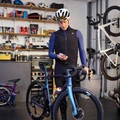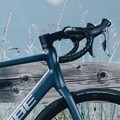
Wahoo Speedplay Pedals
Installation
I have long been curious about Speedplay pedals thanks to their lollipop-esque aesthetics, notable pro-rider use and positive reviews from cycling peers. But a nearly 20-year relationship with LOOK pedals, which has generally been trouble-free, has offered me little reason to change. However, Wahoo’s recent acquisition and design tweaks of the Speedplay pedal format have prompted me to finally act on my curiosities, take the plunge, and make the switch.
In this article, I draw some initial comparisons between my old set of LOOK Keo Blade Carbon Chromo Road Cycling Pedals and my new pair of Wahoo Speedplay Nano Pedals, and detail my experience swapping the Wahoo Speedplay cleats onto my shoes.
My New Wahoo Speedplay Nano Pedals
A smart, compact box houses the two pedals, an initially unnerving amount of cleat hardware and thankfully, a leaflet that details installation in an easy to read, step-by-step format. Taking the pedals out of the box, they have a high-quality appearance and feel in hand. Compared to Speedplay pedals of old, Wahoo’s redesign has concentrated on integrating better sealed bearings and placing more metal on the main body to reduce wear and ease cleat engagement. They have also replaced the need to use a pedal spanner for installation with more robust hex key ports in the ends of the axles.
Contrasting Design Approaches
The most notable difference between Wahoo Speedplay and LOOK Keo Blade is that the Wahoo Speedplay system situates its retention springs in the cleats rather than in the pedals. This reversed format helps the design offer exact fore/aft, side-to-side, and rotational fit alterations instead of LOOK’s more rudimentary cleat adjustment. This design contrast also affords decreased stack height to potentially increase pedalling efficiency, reduce aerodynamic drag and grant extra cornering clearance.
Float And Retention Differences
Rather than LOOK’s colour coded, three cleat system that grants 0°, 4.5° and 9° of float, the Wahoo Speedplay cleat instead provides between 0° and 15° of float that is adjustable via two small, integrated screws. The amount of force needed to unclip from LOOK Keo Blades is altered by changing the carbon springs on the pedal bodies. Alternatively, the Wahoo Speedplay system offers two types of cleat with either standard or easy retention springs. Standard cleats ship with all pedal models apart from the Comp that is supplied with the easy tension variant.
Wahoo Speedplay shoe compatibility
Wahoo Speedplay cleats use a four-bolt shoe attachment pattern. With most shoes only offering the three-bolt cleat attachment configuration suited to LOOK and Shimano pedals, Wahoo Speedplay cleats require the use of a base/adapter plate to make them compatible with all road cycling shoes. This base plate adds an extra step to cleat set up but does afford extra positional accuracy. Handily, the base plate is included within all the pedal packages, meaning that no extra purchase is required.

Set-Up Step 1 - Base Plate Shims
All three-bolt cycling shoe soles have a slightly curved profile, so the Wahoo Speedplay base plate provides a flat mounting surface for the cleat, ensuring that it can’t be distorted during installation. The mating surface of the base plate has to match the sole’s curvature, so a range of swappable blue plastic shims are provided to guarantee accurate marrying.

Set-Up Step 2 - Base Plate Fore/Aft
The base plate is responsible for adjusting the fore/aft position of the cleat arrangement and offers 20mm of adjustment in this regard. The base plate has markings denoting where its centre line is, and this corresponds to where the pedal axle will be situated. Before I uninstalled them, I marked the fore/aft centre of my LOOK cleats on the soles of my shoes. These markings gave me a valuable reference point to align the centre of the Wahoo Speedplay base plate with, ensuring an accurate fore/aft position replication.

Set-Up Step 3 - Cleat Positioning
The Wahoo Speedplay cleat is attached to the base plate via four screws and provides around 15mm of left/right stance width adjustment. This took me around five minutes to dial in per cleat with a simple trial and error process that concentrated on matching the foot-to-crank arm clearance that I had with my LOOK pedal set up.

Set-Up Step 4 - Adjusting the float
Two small grub screws adjust the angle and range of float offered by the Wahoo Speedplay cleat. With these screws completely backed off, 15° of float is provided, allowing lots of ankle pivot. The screws can be wound in equally to reduce the scope of float or independently to stop the heel pivoting in one particular direction. Wound all the way in, the screws prevent any float, offering a locked-in feel.

Set-Up Step 5 - Final Tweaks
Once the base plate fore/aft, cleat left/right and float have been adjusted the included cleat surround cover can be clipped into place. This provides protection to the cleat, aids with grip when walking and has a sleek profile with dimpled surface pattern to lower aerodynamic drag.
The Wahoo Speedplay Nano pedals certainly have a premium appearance and build quality, and while installing the cleats, I easily exorcised any pre-conceived set-up demons, proving that these shouldn’t be a factor when considering swapping from another pedal brand. In fact, the cleat set-up, while a touch more involved, seemed to grant extra positional accuracy that could lead to more comfort and power when riding.

Shop The Wahoo Speedplay Road Bike Pedal Range










